A Visual History Of How The March On Washington Became One Of The Biggest Protests Ever
In 1963, Birmingham, Ala. had become the epicenter of racism. A KKK clansmen bombed a Baptist church, killing four young girls in September.

As a result, Martin Luther King Jr. turned his focus to the area. He organized many anti-segregation demonstrations despite a state-wide ban.
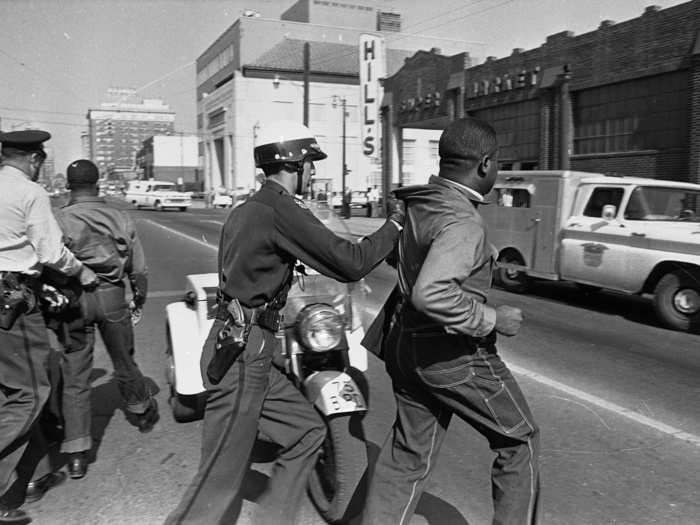
As expected, police arrested King and his fellow civil rights proponent, Rev. Ralph Abernathy on April 12, 1963 during a demonstration. A day earlier, the two held a press conference, announcing their plans to continue demonstrating regardless of the consequences.
The situation in the South continued to worsen.
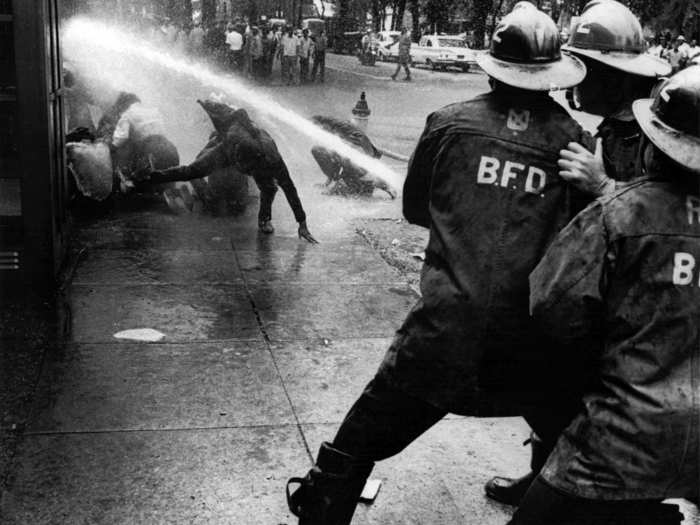
Firefighters in Birmingham turn a high-powered hose on peaceful demonstrators. Bayard Rustin, the march's head organizer, said that credit for mobilizing the march could go to "Bull Conor [Commissioner of Public Safety in Birmingham], his police dogs, and his fire hoses."
Source: Congress of Racial Equality
The assassination of Medgar Evers on June 12, 1963, the first director of the Mississippi NAACP, also created outrage and sorrow in the black community.
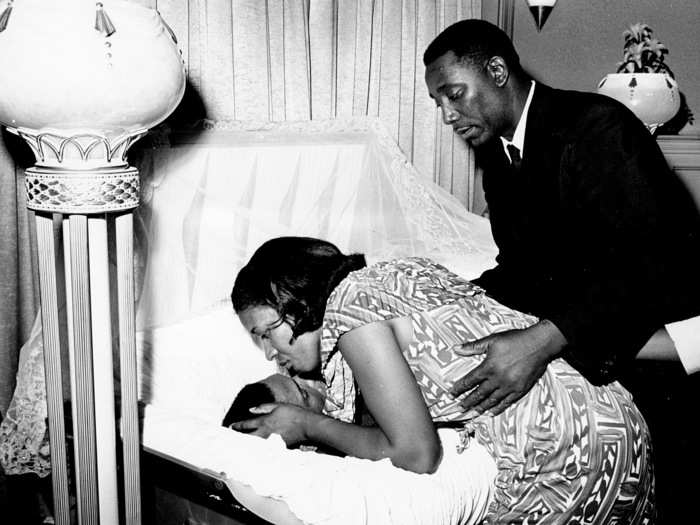
Myrlie Louise Evers bends down to kiss her decreased husband at a public viewing at a funeral home in Mississippi. Evers was shot in front of his home on June 12, 1963 at the age of 37.
Days later, black demonstrators descended on Washington. Few incidents occurred, defying speculations of violence and other negative press.
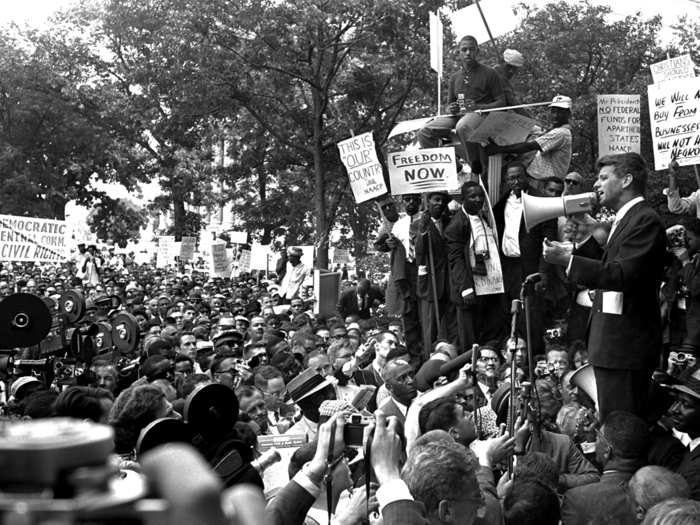
Attorney General Robert Kennedy addresses the crowd with a bullhorn. Demonstrators marched to the White House, then to the District Building, and ended at the Department of Justice.
Demonstrations around the country began happening with greater fervency and frequency.
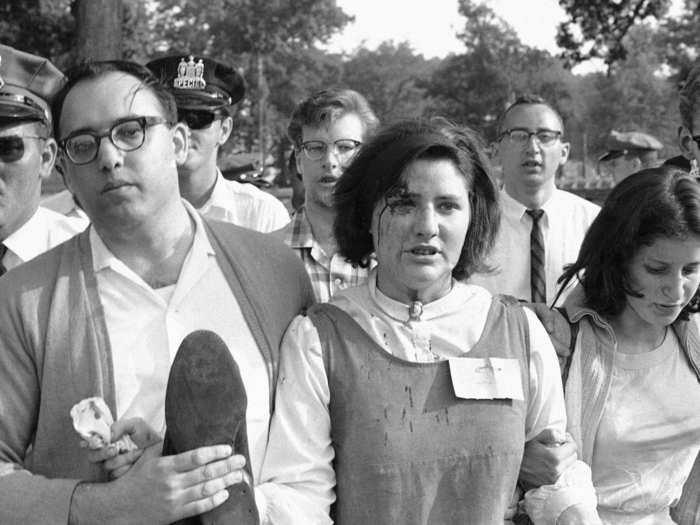
Here, Alison Turaj continued marching through Gwynn Oak Amusement Park in Baltimore, despite a cut on her forehead. During a peaceful demonstration in July, a mob of angry whites threw a rocks at her and others. Yet police arrested more than 100 black and white integrationists that day.
Finally, six of the most prominent black leaders gathered in New York City on July 2 to plan a civil rights march on Washington.
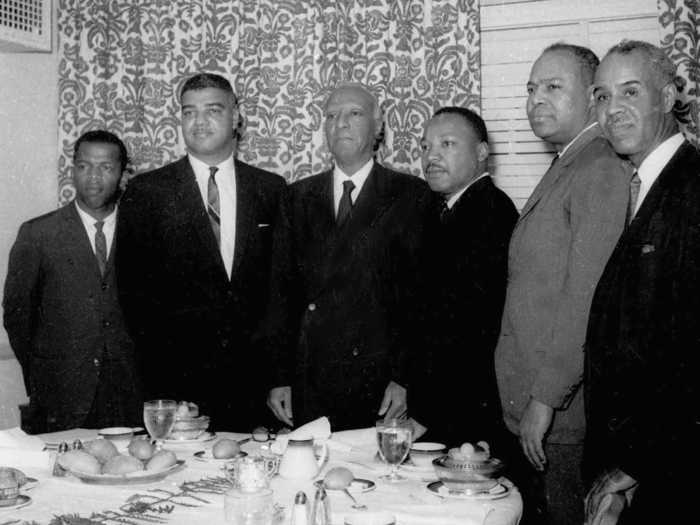
From left: John Lewis, chairman Student Non-Violence Coordinating Committee; Whitney Young national director, Urban League; A. Philip Randolph, president of the Negro American Labor Council; Dr. Martin Luther King Jr. president Southern Christian Leadership Conference; James Farmer, Congress of Racial Equality director; and Roy Wilkins, executive secretary, National Association for the Advancement of Colored People.
Bayard Rustin acted as head organizer for the march.
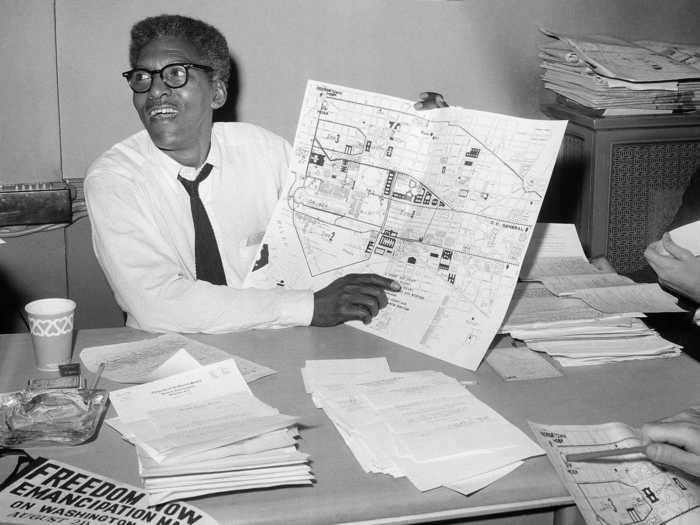
He will receive the Presidential Medal of Freedom posthumously at this year's 50th anniversary commemoration. Rustin reportedly came up with the idea of selling buttons to raise funds for the march.
Source: NPR
Rustin set-up the march's headquarters in a walk-up apartment in Harlem.
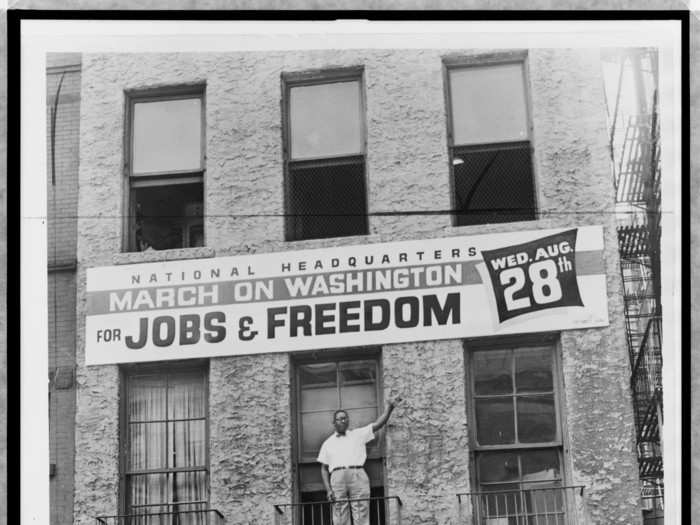
There, organizers made and sold these buttons, to fund the march — a symbol of the power of grassroots organizing.
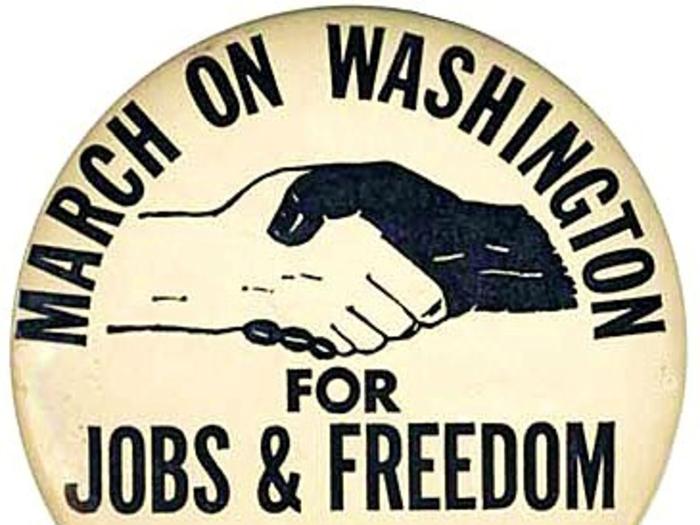
Celebrities also played a crucial role in financing the March on Washington.
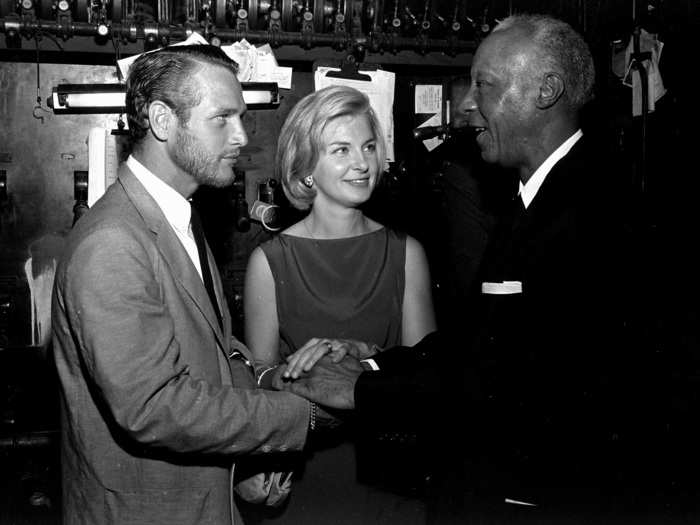
A. Philip Randolph, right, the director of the March on Washington, shakes hands with actor Paul Newman, at a benefit performance at Harlem's Apollo Theater. Stars performed a four hour post-midnight show that night which raised $30,000 four days before the march began.
But the March on Washington owes the most to labor unions.
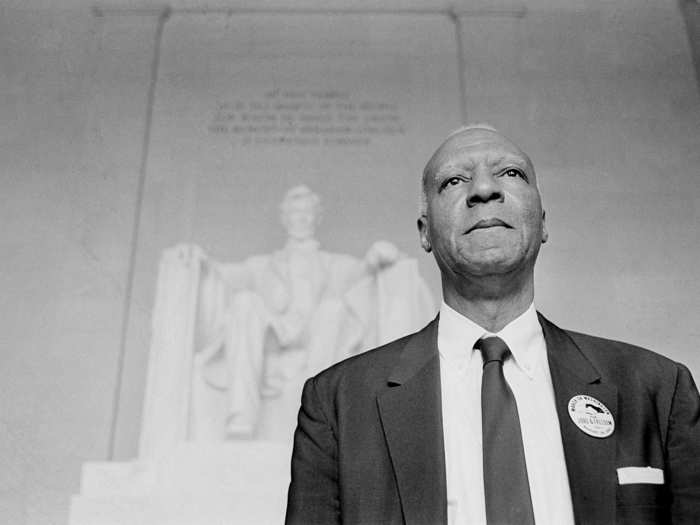
Randolph, shown above in front of the Lincoln Memorial, lead the Brotherhood of Sleeping Car Porters, one the first and largest black labor unions. He tried to rally for a march on the nation's capital in 1941 but President Roosevelt quelled his threats by passing the Fair Employment Act. Decades later, unions, like Randolph's, provided the initial money as well as much of the door-to-door organizing power for the march.
Source: USA Today
On the day of the march, people of all ages and races from across the country made their way to the nation's capital.
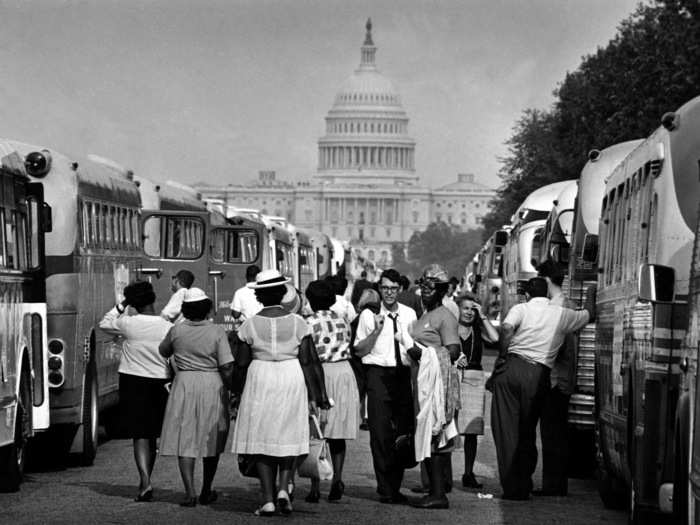
By one account, buses flooded the capital at a rate of 100 per hour.
Source: Marin News
Some traveled very far in unconventional ways.
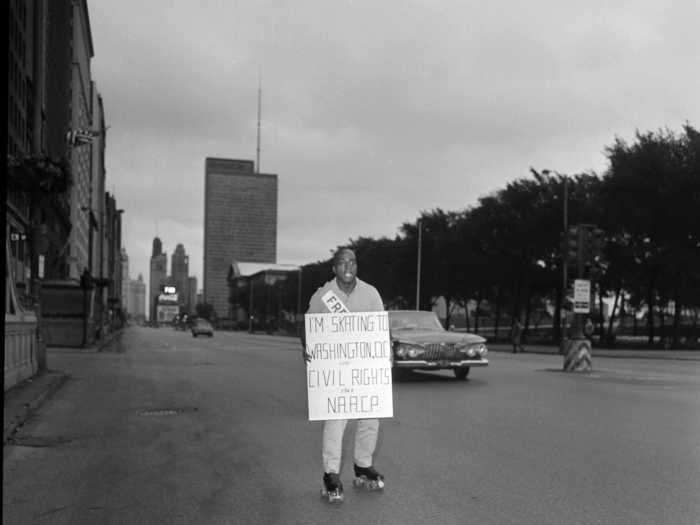
On August 17, Ledger Smith, 27, began his journey from Chicago to Washington. The professional roller skater, known by his stage name "Rollerman," skate the 685 miles in 10 days to join civil rights demonstrators at the nation's capital on Aug. 28.
Source: The Baltimore Afro-American
Others simply walked, determined to join the march.
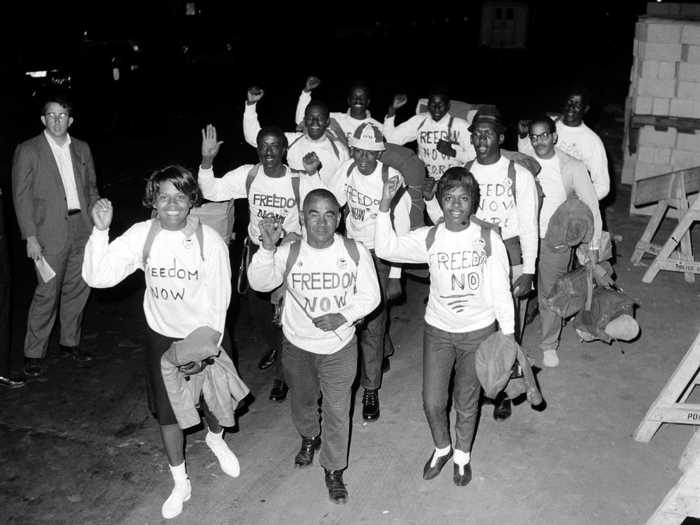
Members of Congress for Racial Equality (CORE), one of the march's sponsors, walked 250 miles to Washington, D.C. They left Brooklyn on Aug. 17.
The march's momentum also attracted some surprising support.
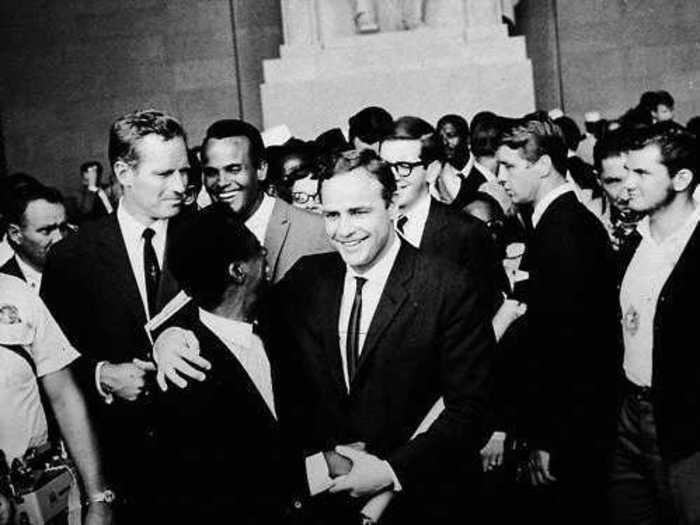
Most remember actor Charlton Heston in his roles as a brooding frontiersman or later, president of the National Rifle Association. But Heston also championed civil rights and attended the March on Washington.
Source: The Independent
As protestors began to arrive at the National Mall, they were greeted by thousands of military police — security for "expected" violence at the event.
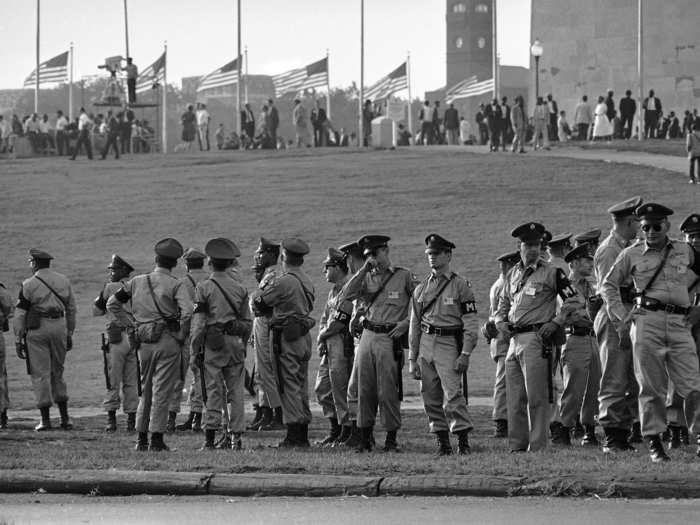
“Merely contemplating the possibilities for trouble and the logistics of the demonstration has given Washington officialdom its worst case of invasion jitters since the First Battle of Bull Run," Life Magazine wrote five days before the event.
For safety reasons, they denied entry to some like George Rockwell, especially counter-protestors who might cause trouble.
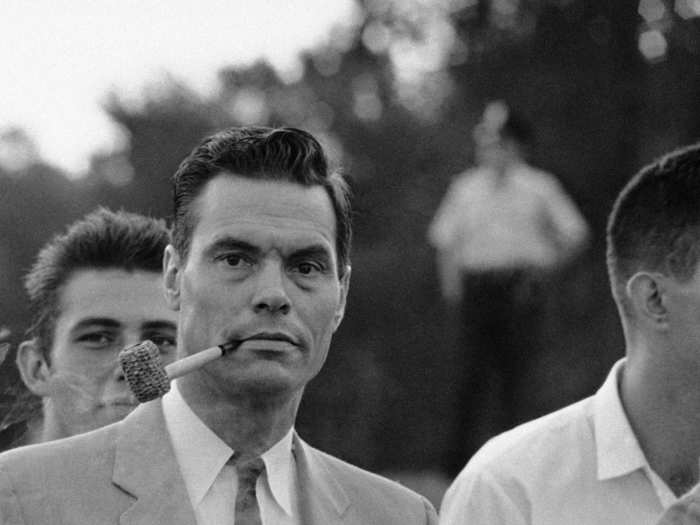
George Lincoln Rockwell, shown above smoking a corn cob pipe, tried to gain access to the parade but police denied him a permit. As leader of the Anti-Negro Anti-Jew American Nazi Party, he and his followers showed up without their usual uniforms.
More than 100,000 people were expected to attend the march.
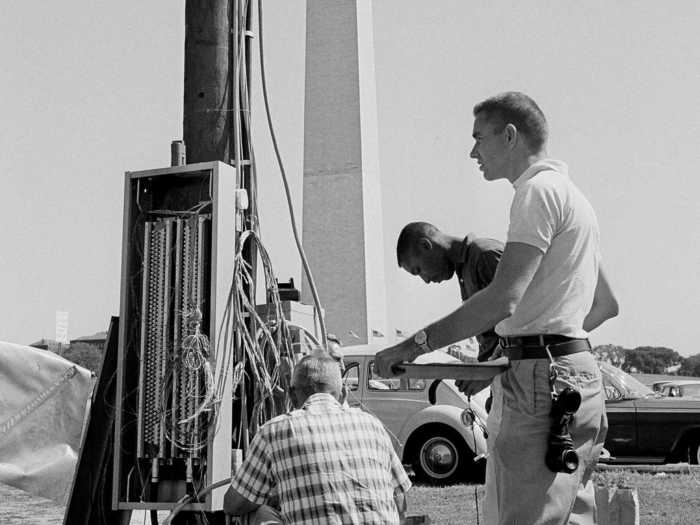
Here, workmen install extra telephone poles to uphold general communication at the event.
On the day of the march, participants totaled an estimated 250,000, one of the largest protests in U.S. history.
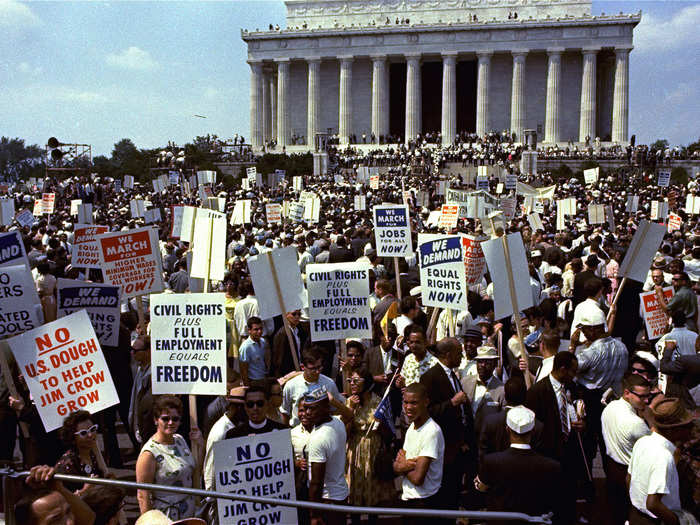
The march's organizer's budgeted $7,000 for signs.
After marching through downtown D.C., participants gathered at the Lincoln Memorial to hear King's lionized "I Have A Dream" Speech.
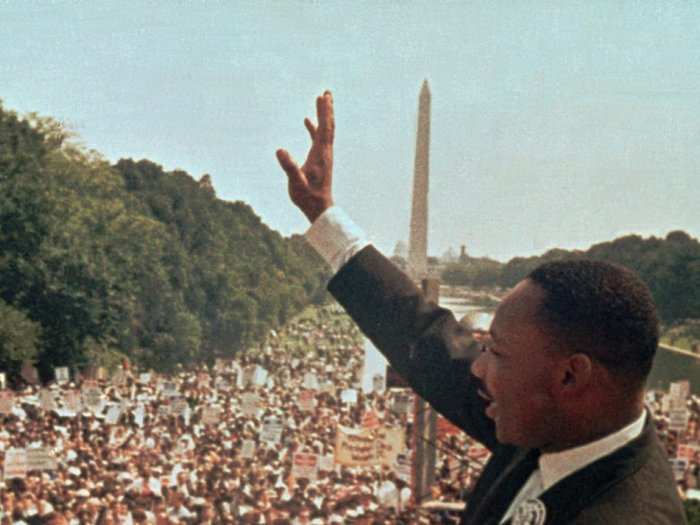
This year, President Obama will give a speech at the exact spot where King gave his in 1963. Click here for audio of the original.
Source: 50anniversarymarch.com
Then, the still-peaceful sign-carrying parade traveled to the Washington Monument.
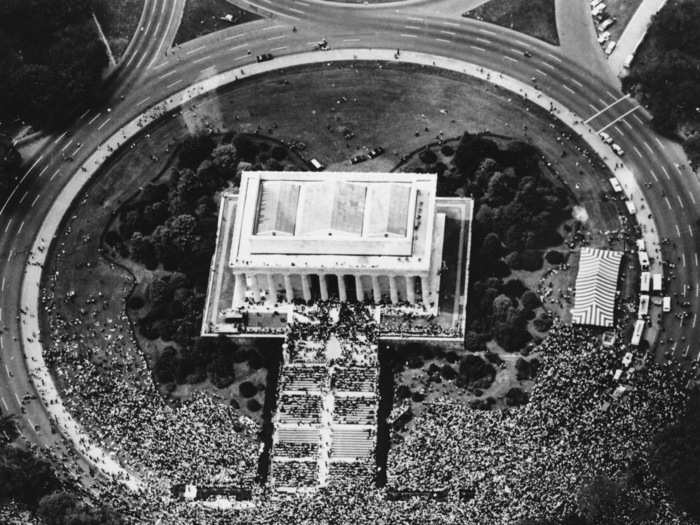
There was a chain reaction as sister protests for civil rights erupted across the globe.
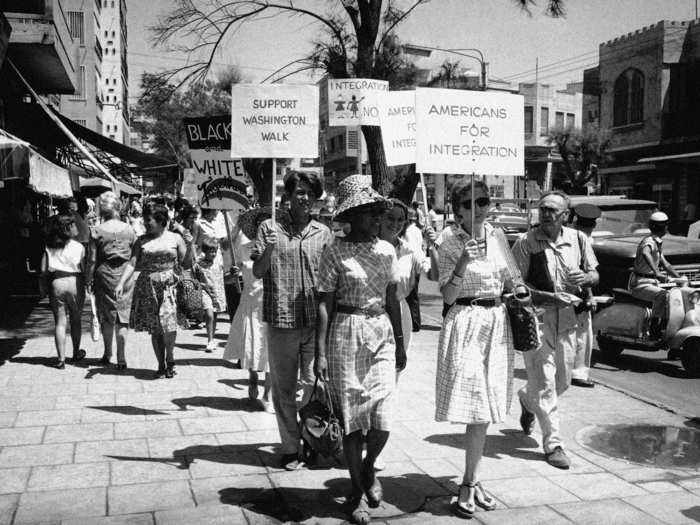
About 100 Americans living in Israel showed their support for the anti-segregation march in Washington by hosting their own demonstration at the American Embassy in Tel-Aviv. The demonstrators carried both English and Hebrew signs demanding the peaceful integration of whites and blacks.
The march's impact and value extend far beyond that day in August 1963. Not only did the events inspire civil rights legislation and alter public opinion, they paved the way for future demonstrations in the environmental, feminist and anti-war arenas.
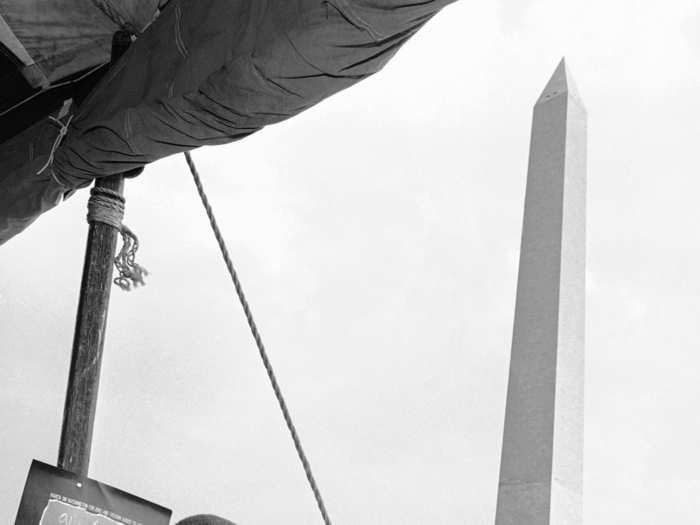
Here, Roosevelt Nesmith speaks to his son about 3-year-old son about the march. Nesmith later led a scaled-down version of the March on Washington in his hometown of Camden , NJ, still plagued by the effects of the Jim Crow.
A Visual History Of How The March On Washington Became One Of The Biggest Protests Ever
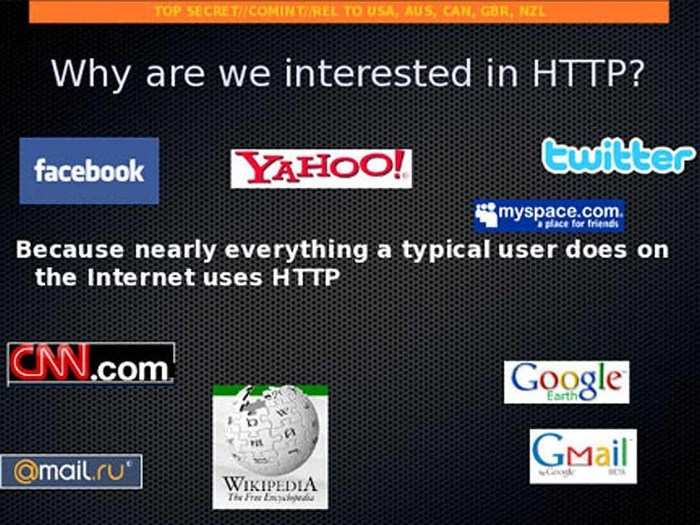
Popular Right Now
Advertisement